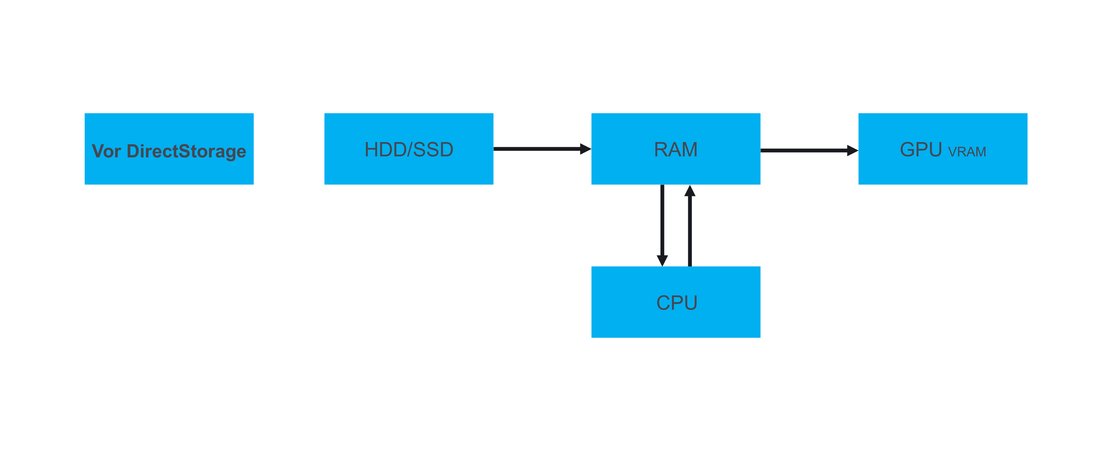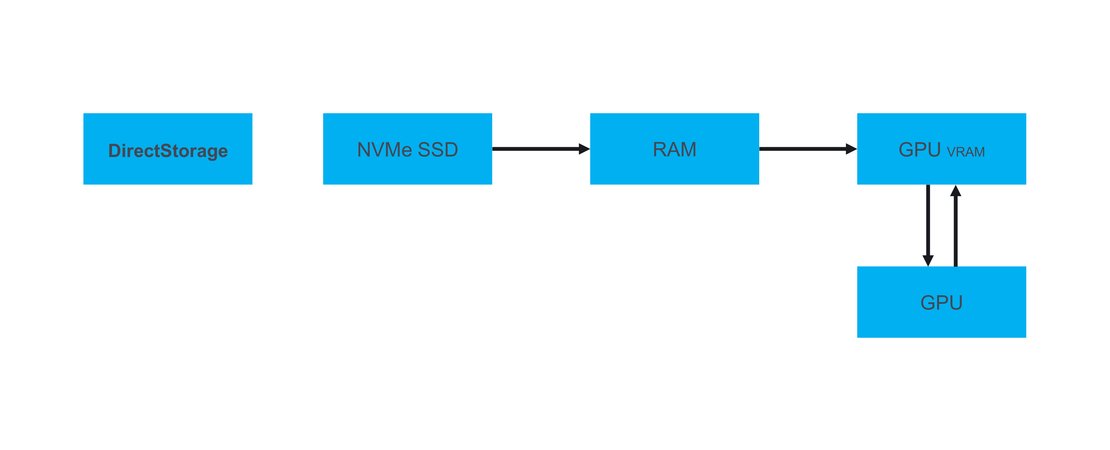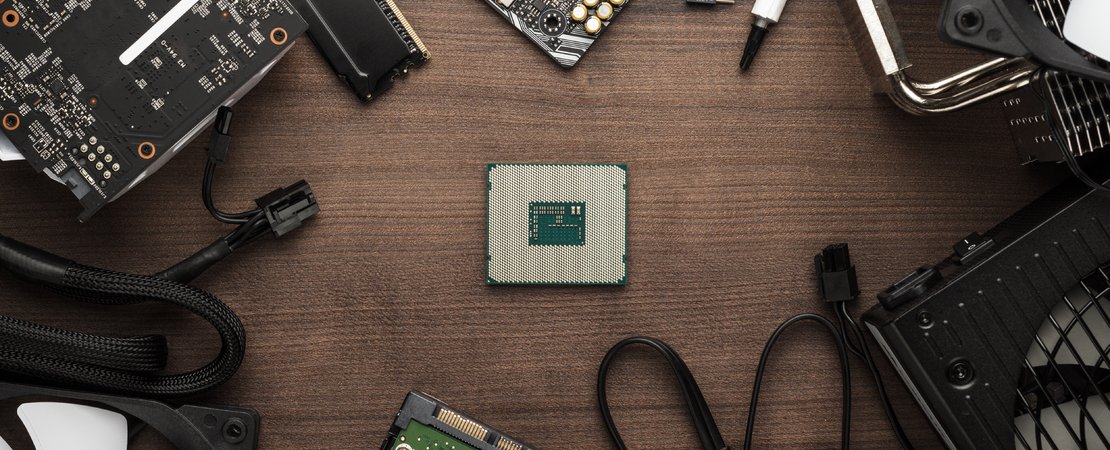What is DirectStorage?
In a nutshell, DirectStorage is a way to transfer graphic files faster from the internal hard drive to the graphics card. The graphics card takes over the decompression of the files directly and they no longer have to make a stopover via the CPU. This is supposed to shorten loading times significantly and at the same time enable more extensive graphics in games.
Microsoft introduced this technology with the Xbox Series X and its Xbox Velocity architecture. This has significantly shortened loading times for games. Microsoft promised at the time that DirectStorage would also come to the PC and wants to implement this by the end of 2022.
What's it like now?
Before DirectStorage, game data had to be loaded from the hard drive, sent to RAM to be decompressed by the CPU. Only then could the graphics card render the decompressed data.
That's quite a few steps, which not only take time, but also tax the CPU and only allow a certain amount of data at a time. But as games become increasingly demanding in terms of graphics and more textures, character models and audio files have to be loaded, systems reach their limits sooner and sooner.

How DirectStorage Works
With DirectStorage, this is set to change and CPU-based decompression will be completely eliminated. The new software also brings with it additional benefits. For future game development, this means that developers will have to store their data differently.
They will have to divide their assets into stacks, which can be processed in different processing requests. These requests can be processed in parallel and deliver significantly more output in the same amount of time. Combined with the high read speeds of modern NVMe storage (7,000 MB/s and more), the aforementioned benefits come together.

According to Microsoft, the new DirectStorage API can relieve the CPU by up to 40 percent.
In order to use the new technology in the future, you need SSDs that support DirectStorage. A good example of this is the new Sabrent Rocket 4 Plus-G.
